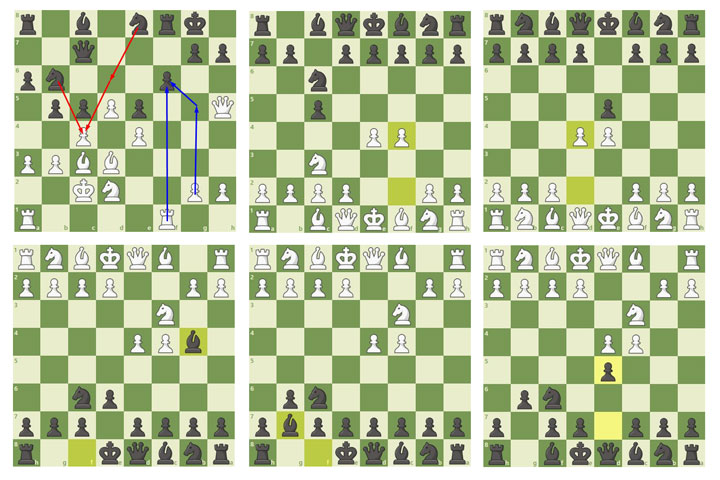What Are The Chess Openings
Chess Openings are a sequence of moves that determine the flow of a chess game. Players can predict from an opening if a game is bound to be stale or action-packed, so here, we compare the intricacies behind aggressive and defensive openings. What are the implications of playing aggressively or defensively? How do we know when to switch from an attacking frenzy to a defensive blockade?
Aggressive Chess Openings
"With great power comes great responsibility" is the most suitable quote for describing these openings. I told it with this quote because as much as it is fun and highly effective to attack, it can be just as implosive if not handled carefully. Your opponent could attack you brutally if you do not proceed with care, precision, and utter responsibility.
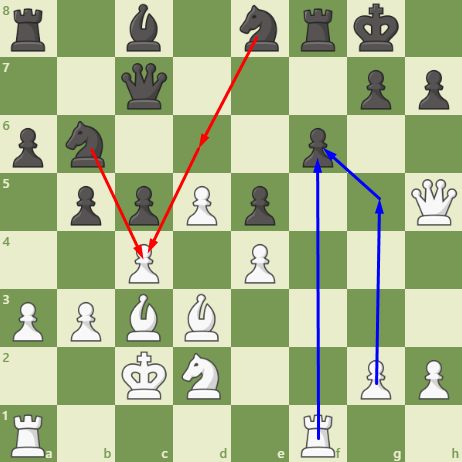
Devising an aggressive attacking plan
Some aggressive chess openings include a healthy list of gambits, especially the ones broken down on chessdoctrine.com, and co-dominated by e4 openings. There are a few flank openings and d4 openings as well, but they are in the minority. Let's look at some specific aggressive openings.
Smith-Morra Gambit
This Gambit is an offshoot of the Sicilian Defense, where White goes on the offense by sacrificing a pawn early in the game. The lines are 1.e4 c5 2.d4 cxd4 c3. It is similar to the Danish Gambit that offers a pawn for a lead in development. You are guaranteed the initiative if the Smith-Morra Gambit line is played out, but be mindful of what you do with the initiative. Otherwise, your pawn sacrifice might backfire.
The Grand Prix Attack
This attack is another setup of the Sicilian Defense main line. White aims to explore an attack by deploying pawns to grab control of the kingside squares. It goes 1.e4 c5 2.Nc3 Nc6 3.f4 (...g6 4.Bb4 usually follows). Once White trades off the c6 knight from the board, they better control the center.

Sicilian Defense: Grand Prix Attack
Scotch Game
The Scotch Game is that opening everyone plays during their first steps as chess players. We see 1.e4 e5 2.d4 as the quickest way to get the game going and hop straight into the attack. From here, there is the opportunity to develop your queen, have a stronger hold of the center, and develop your bishop to join the attack.
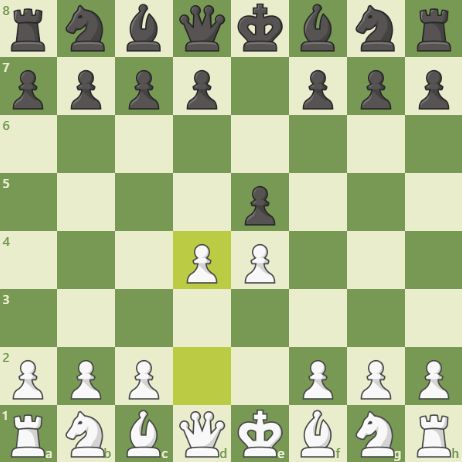
Defensive Chess Openings
From our dissection of some aggressive openings, we saw that not all openings with "Defense" in their name are defensive openings, but most defensive openings have "Defense" in their name. This term is because, from an engine perspective, White's privilege of making the first move offers White a slight advantage. Chessdoctrine's article on chess opening moves offers detailed information for exploring different kinds of openings, including aggressive and defensive ones.
Therefore, since White forces Black to respond to the first move (ply) from White, it initiates the defensive part of openings. So why do we owe our attention to defensive chess openings? Let's find out by identifying defensive openings.
Nimzo-Indian Defense
Reliable and solid but presenting few attacking opportunities, the Nimzo-Indian Defense is the go-to option if you are looking to frustrate the opponent's advances. Nimzo-Indian is characterized by the following moves: 1.d4 e6 2.c4 Nf6 3.Nc3 Bb4
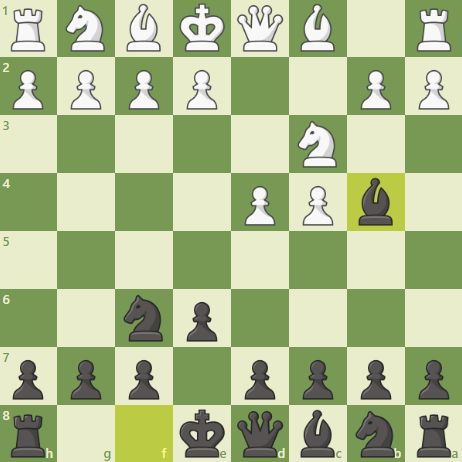
The opening starts with: 1.d4 Nf6 2.c4 g6 3.Nc3 Bg7
King's Indian Defense
Black allows White to gain control of the center in this Hypermodern opening. The rest of the game is spent fortifying their position and poking holes in their opponent's defenses. Bobby Fischer and Garry Kasparov are some stars who made this opening famous, but Germain Jones, through Chessable.com, does an excellent job at breaking down the intricacies of the King's Indian Defense.
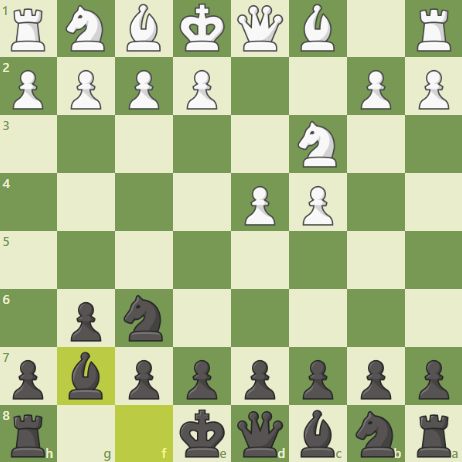
1.d4 Nf6 2.c4 g6 3.Nc3 Bg7
Grunfeld Defense
Chess.com calls the Grunfeld Defense the cousin of the King's Indian Defense, and this is true in many ways. White tries to create an intimidating kingside pawn structure, but Black is set up and ready to play against it. The starting moves are: 1.d4 Nf6 2.c4 g6 3.Nc3 d5 (instead of 3…Bg7 in King's Indian Defense).
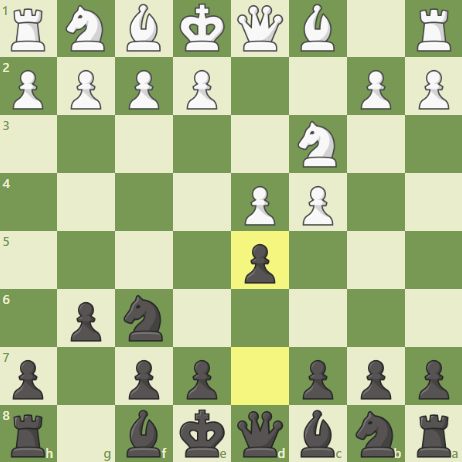
The Grunfeld Defense
Comparative Analysis
Aggressive openings typically have a common desire to sacrifice a piece (usually a pawn) for spatial advantage, while defensive openings are unwilling to offer any piece. Instead, defensive openings use a "blockade" approach to obstruct the attacking channels of their opponents waiting for a tactical slip.
In a case of no or insignificant errors from the attacking opponent, players who play defensive openings are usually satisfied with a draw result. According to reports from 25,000 games played on chess.com, Black loses 34% of games where they opt to play the Nimzo-Indian Defense. The number might look outrageous, but it is decent considering that Black has a slight initial disadvantage.
Comparative Table
|
Aspect |
Aggressive Openings |
Defensive Openings |
|
Nature |
Attack-oriented, proactive |
Solid, reactive |
|
Key Openings |
Smith-Morra Gambit, Grand Prix Attack, Scotch Game, Scotch Gambit, and more |
Nimzo-Indian Defense, King's Indian Defense, Grunfeld Defense, and more |
|
Approach |
Sacrificing pieces for development and control |
Focusing on solidifying position, frustrating opponent |
|
Characteristic Moves |
Pawn sacrifices, rapid development, center control |
Allowing control of the center, fortifying position |
|
Strategic Focus |
Initiative, swift attack, control of center |
Solid defense, counterattacks, exploiting opponent's weaknesses |
|
Risks and Opportunities |
High risk and reward, can be implosive if not careful |
Less attacking opportunities, reliable and frustrating for the opponent |
|
Famous Practitioners |
Garry Kasparov, Mikhail Tal, Bobby Fischer |
Tigran Petrosian, Anatoly Karpov |
Thoughts
A keynote to make is that aggressive openings are only sometimes paralleled to good results. Aside from an advanced skill level of chess playing, players believe gambits are cool and enticing, but the top players seldom use gambits against one another in decisive games. If you can play it safe and get a win, it is the most recommended approach for and by advanced players.
The above article was collaboratively crafted with ChessDoctrine.com, a free resource for chess beginners. You may delve into their extensive collection of articles, meticulously authored by experienced chess coaches and seasoned chess masters, covering strategies, terms, pieces, and more. For a deeper exploration of opening moves, visit the chess openings page on the site.
